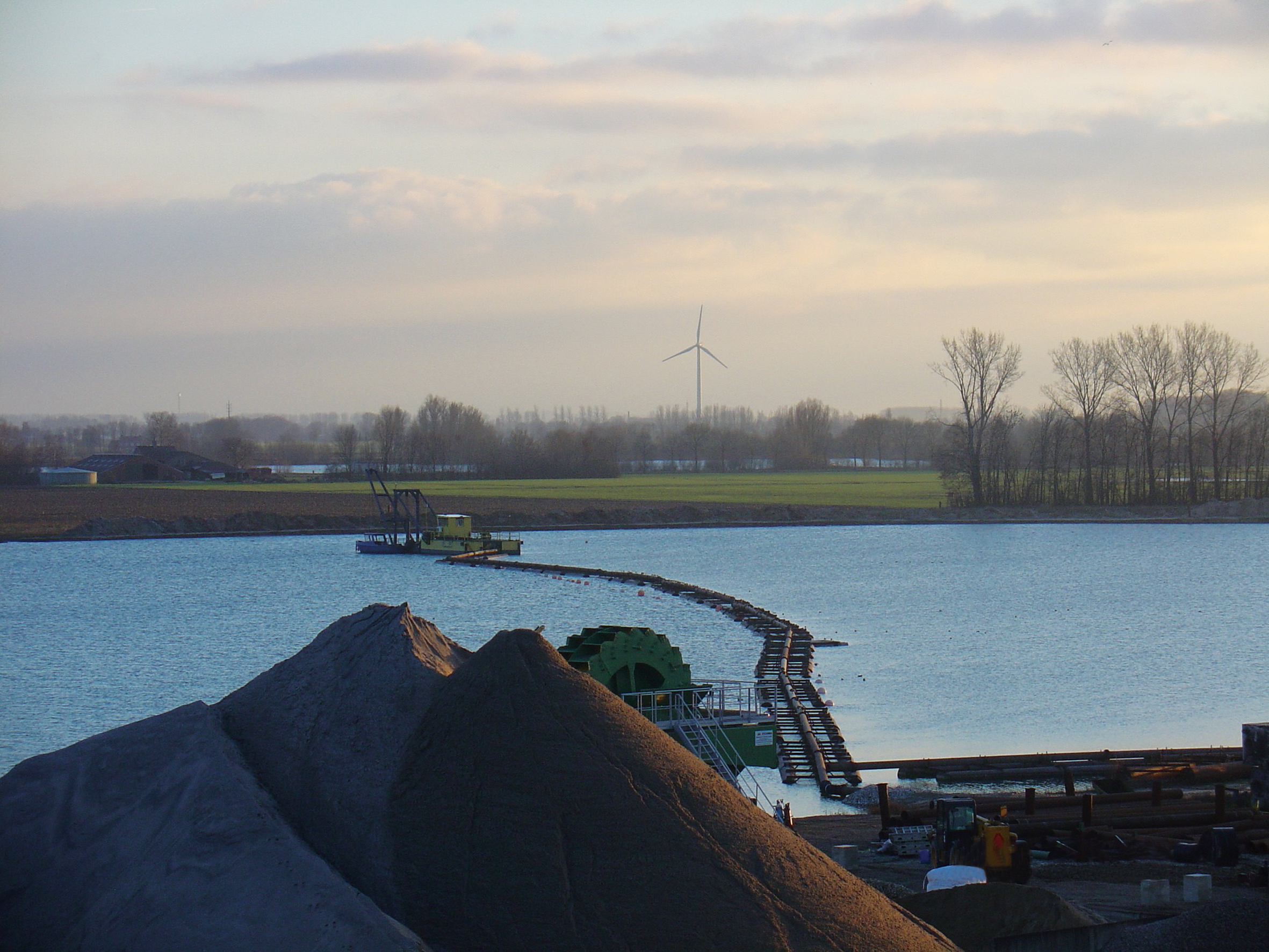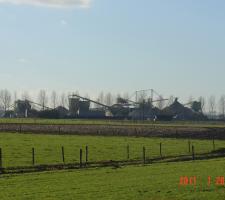
Lack of geological resources means that the aggregates market in the Netherlands relies on recycling and imports to meet national demand. Julie-Anne Ryan reports.
What marks the Dutch aggregates market out from others in Europe is the paucity of naturally occurring geological resources, and thus the reliance on imports and recycling. The country's 100 active quarries and pits produced mostly sand and gravel in 2009, with marine aggregates coming second, though that particular resource was a far from close runner up with just 35 sites.
The total turnover for 2008 for native quarries was estimated at €455million - sand and gravel accounted for €215million, while the markedly fewer marine extraction sites turned over an impressive €160million. Recycled aggregates in the same period brought in €80million, nearly 18% of the total. In terms of employment, the recycling sector of the industry employs by far the biggest number of contractors.
The geology of the area includes deposits of fine sand (filling sand) in the west Netherlands and the North Sea. Coarser sands are found in the east Netherlands upstream along the Rhine and Meuse - these are largely used by the concrete and masonry industries. Further upstream along the Maas, in middle and South Limbur, there are limited supplies of gravel. There are no natural stone outcrops because there are no mountains.
These areas will be able to satisfy the Netherlands' own demand for concrete and masonry sands for about 8,000 years.
The resources along the coast, which are too fine to be recoverable, can satisfy about half of the region's demand for gravel from the limited occurrences in the south eastern area.
Import Demand
This is where the need for imports comes in - because the Netherlands cannot meet its own demand for gravel and crushed rocks, there has to be importation of both these resources, plus concrete and masonry sands. Gravel and coarse sand comes in from the German Neder Rijn, the Belgian and German parts of the Meuse Valley and the English part of the North Sea. The product is classified and sorted in the sea ports.
Gravel and crushed rocks also come in from the German upper Rhine, again the Belgian and German parts of the Meuse Valley, the Belgian Ardennes and other areas in Germany, and even from super quarries in Scotland and Norway, supplied from seaports.
The figures are telling. Over the three decades since 1980, demand for gravel has gone down and production has plunged from 16 to 1.7million tonnes.
Production of concrete and masonry sand has dropped from 21.3 to 14.5million tonnes despite an increase in demand; in both cases the shortfall has been made up by imports. Demand for and import of crushed rock has begun to decline after rising from nothing to a peak at 11million tonnes five years ago. Filling sand has remained quite constant, with exports rising slightly to 4.8million tonnes.
In 2000, the Netherlands produced about 88million tonnes of fine filling sand (36million tonnes of which was marine dredged), 21million tonnes of coarse sand, 6.6million tonnes of gravel, 4million tonnes of clay and 1.5million tonnes of limestone for industrial use. About 15million tonnes of aggregates were exported, 34million tonnes were imported.
A 2003 report 'Construction raw materials policy and supply practices in Northwestern Europe' stated: "The national government provides mineral planning guidance and is the permission authority for the state waters. The provinces address mineral planning in regional plans and are the permission authority for the land area.
"In the past decades, land extraction has met with a growing societal resistance. As a consequence, provincial administrations have become increasingly reluctant to grant extraction permits. This especially applies to large-scale coarse sand and gravel extractions which, for geological reasons, are operational or considered in the southeastern half of the country, while a large part of the demand is generated elsewhere.
In order to sustain the aggregates supply, assignments ('taakstellingen'), i.e. amounts of quarry products for which permits are to be granted, have been negotiated between national and provincial rulers." In 2003 the government decided that it was no longer possible to determine targets and leave the industry to market forces, and the National Spatial Strategy actually stated that the extraction of construction materials in the country was of national interest.
Sustainable Focus
Cascade, the trade association for sand and gravel producers, was established in 2007. The sustainable production of sand and gravel is the central tenet to Cascade's existence, and Secretary General Leonie van der Voort explained that sand and gravel extraction is seen as an important foundation for all forms of land development. River widening, riverside living and recreational improvements can all be a by-product of the development of natural resources, the organisation believes - improving the whole area in which the industry is active.
Extraction companies responsible for developing projects with social value and social support, and the sand and gravel producers realise that this can only come about through the development of sustainable projects.
Ms van der Voort explained that national policy is no longer based on government planning, but on marked initiatives; this has led to a reduction of 50% in the production of concrete sands and gravel since 2002. Between 2002 and 2010 the lack of production sites - especially for national operating companies - meant more imports from Germany, Belgium and the UK.
Alongside importation, recycling has played a big part in the industry, she added.
"The recycled aggregates are used 100%! The industry uses everything there is, and this is a very good thing. Recycled aggregates account for 20% of the Netherlands' total, the other 80% comes from primary materials. Maybe, in the future, if more recycled aggregates become available, we can use even more than 20%.
"But what's important is that the recycled aggregates are clean, and cleaning of this material is not always good for the environment in terms of CO2 discharge. Also, using a lot of recycled aggregates, for example in concrete, it is likely that more cement and water is needed, and this also means a lot of CO2 discharge.
"I think that in the coming period we have to find out what is the best way to use our recycled aggregates - not only the percentage of recycled aggregates used in concrete, but also in what kind of application it is best to use them."
She outlined some of the opportunities for and threats facing sand and gravel dredging in the Netherlands. One problem is government interference in relation to European rules to call for tenders, and another is being caused by the increase in the local requirements for new dredging projects, which can lead, she said, to a lack of feasibility. Also, European rules for Natura 2000 - an ecological network of protected areas in the European Union - restrict what might be done in terms of expansion of the industry. Members of the
But on the plus side, she said, sand and gravel dredging realises other functions by the production of granulates. By-products of the activity include measures against river flooding, the development of natural surroundings, the creation of recreational water sites, and improvements in the storage of water. This can all provide a desirable "financial motor" for the development of communities, which will benefit from the improvement and protection of nature, and the solving of water problems.










